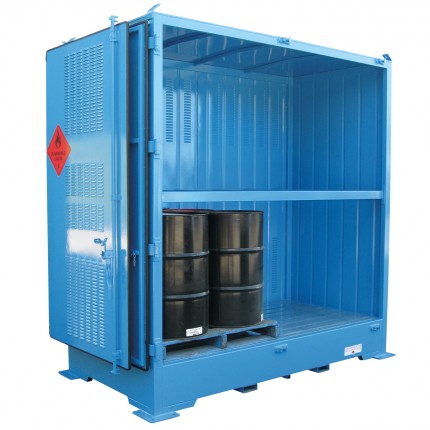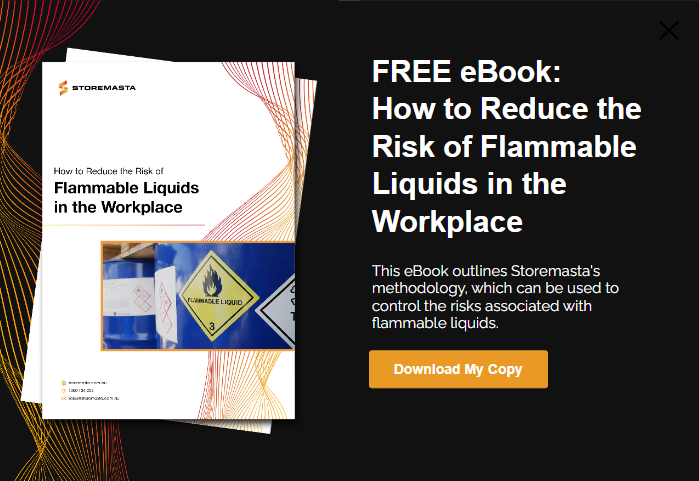Throughout Australia, there has been some confusion as to whether diesel fuel is classified as a dangerous good, or a non-dangerous substance. The correct answer to this question is very critical as the requirements for the storage, handling and transport of the substance vastly differs depending on it’s classification.
The answer to this question depends on whether you are transporting or storing diesel fuel. For transport purposes, diesel fuel is not classified as a dangerous good by the ADG code. However, for storage purposes, diesel is classified as a dangerous good. Diesel fuel must always be stored in full conformance to the Australian standard AS1940-2017.
Dangerous Goods classification for storing Diesel.
Most diesel fuels are not classified as Class 3 Flammable Liquids because their flash point is normally above 60 degree Celsius and therefore they do not meet the specifications of flammable liquids as outlined by AS1940-2017. Even though most diesel fuels are not classified as a flammable liquid, they are classified as a C1 combustible, and C1 combustibles are classified as dangerous substances by most state and territory regulations. Therefore no matter whether the diesel fuel that you are using is classified as a flammable or combustible liquid, it must be stored in full conformance to AS1940-2017. This is the Australian Standards that outlines the safe storage requirements for flammable and combustible liquids.
How to safely store diesel fuel
As diesel fuels are classified as either flammable liquids or more commonly C1 combustibles, they must be stored in full conformance to the Australian Standard AS1940-2017 - The storage and handling of flammable and combustible liquids. This standards outlines certain specifications for the storage of diesel fuels. These specifications include:
- Ventilation
- Spill containment
- Segregation from incompatible chemicals
- Separation from protected places and ignition sources
- Dangerous Goods signage
- Operational requirements
These specifications slightly differ depending on whether the diesel fuel is being stored indoors or outdoors.
Indoor diesel fuel storage
AS1940-2017 specifies that diesel fuel can be safely stored using an indoor storage cabinet. An indoor storage cabinet used for storing diesel fuel is the same as an indoor storage cabinet used for the storage of flammable liquids. These safety cabinets are often referred to as flammable liquids storage cabinets. The main design requirements for these cabinets include:
- Double walled sheet steel construction with a 40mm air gap between the walls.
- Self-closing, close-fitting doors that hold shut at two or more points.
- The relevant safety signage, this could include a flammable liquids diamond for Class 3 dangerous goods and/or a C1 Combustibles sticker for combustible substances. The cabinet must also have a “No Smoking no Ignition Sources within 3m” sticker.
- A 150mm deep spill containment sump that has the capacity to hold at least 25% of the aggregate storage capacity of the cabinet.
- Perforated shelving to allow for free air movement within the cabinet.
An indoor storage cabinet for flammable or combustible liquids, including diesel fuel, should be not greater than 850L. Also there should not be any more than one 850L of diesel fuel stored per 250 square meters of workshop floor space.
Outdoor storage of diesel fuel
If quantities of diesel fuel exceeding 850L need to be stored on a business premises, they must be stored outdoors. This can be safely done using an outdoor dangerous goods store that has been manufactured in full conformance with the Australian Standard AS1940-2017. The requirements for an outdoor dangerous goods store according to AS1940-2017 include;
- A spill containment sump that will contain 100% of the largest container kept inside the store, as well as 25% of the storage capacity up to 10,000L together with 10% of the storage capacity between 10,000L and 100,000L and 5% above 100,000L.
- A natural ventilation system comprising of one wall of louvers that has at least 50% of its area as openings.
- Dangerous goods signage, which includes a flammable liquids diamond for Class 3 dangerous goods or a sign stating C1 Combustibles for combustible substances. The store must also have a sign that states “No Smoking No Ignition Sources Within 3m”
An example of a compliant dangerous goods store for the storage of diesel fuels is shown below:
Transport of diesel fuel
The state or territory regulations outline the transport requirements for diesel fuels. These regulations are based on the 7th edition of the Australian Dangerous Goods Code (ADGC). Unlike dangerous goods transport codes for other regions such as New Zealand, Europe and America, the ADGC doesn’t classify diesel fuel as a dangerous good. Section 3.3.3 of the ADGC outlines the Australian Special Provisions. This section states:
GAS OIL or DIESEL OIL or HEATING OIL, LIGHT or PETROLEUM DISTILLATE is not subject to this Code if it does not meet the criteria of Chapter 2.3 for assignment to Class 3; i.e. if the flash point is more than 60 °C and the substance is not offered for transport at a temperature above its flash point. Such substances will normally be C1 combustible liquids which are not classified as dangerous goods for transport purposes. However, the presence of a C1 combustible liquid in one or more compartments of a tank vehicle or portable tank transporting other refined petroleum products must be considered when determining the application of UN Number 1270 in accordance with 3.2.5.4 and 5.3.1.3.3.
As this section states, diesel fuel is not classified as a dangerous good for transport purposes. However, diesel fuels do have a relatively low flash point and they do pose significant threats upon people, property and the environment. Due to this, a number of authorities are requesting for diesel fuel to be reclassified as a dangerous good for transport purposes. One organisation is the New South Wales Environmental Protection Authority. If diesel fuel is re-classified as a dangerous substance a number of things will change for those involved in the transportation of diesel fuel. These changes could include:
- Vehicle placarding to indicate the type of dangerous substance that is being transported to the public and emergency services.
- Personal protective equipment for the driver.
- On-board emergency information to assist dealing with spills, leaks or fires.
- Mandatory dangerous goods training for the driver.
- Mandatory electronic stability control for dangerous goods tank trailers.
- Transport equipment to be reliable and in good condition.
- Design requirements for tankers to ensure technical compliance.
- Transport companies to have insurance to cover the cost of incidents.
- Transport emergency response plans.
Therefore the reclassification of diesel fuel as a dangerous good will have many implications upon those involved in the transport of diesel fuel.
Next steps
As outlined above, diesel fuel currently isn’t classified as a dangerous substance for transport purposes, however it is for storage purposes. Diesel fuel must always be stored in full conformance to the Australian Standard AS1940-2017. This can be achieved by storing diesel fuel in an indoor safety cabinet or an outdoor chemical storage container. If you would like more information on how to reduce the risk of flammable and combustible liquids, download our FREE eBook by clicking on the image below.
Joining the team as a Dangerous Goods Storage Consultant, Melissa Hampton became Storemasta's Marketing Manager in late 2021. With extensive knowledge and experience in chemical compliance, Melissa is responsible for leading the Marketing team and helping shape their marketing strategy. In her spare time, you can find Melissa hiking, swimming and enjoying the great outdoors in beautiful north-west Tasmania.

